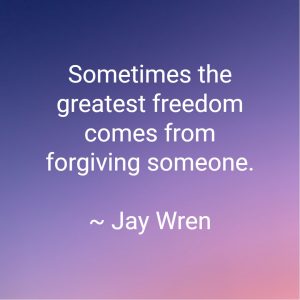Taking breaks from work is crucial for both individual and employer benefits, including improved health, productivity, and well-being. The quality of a vacation is more about its effectiveness in allowing you to recharge and disconnect from work, rather than solely the amount of money spent.
Entirely by accident, I did so many fun things for free while on vacation. By design, I could have done so many more fun things for free and had so much more fun!
Be smart and conscious about potential scams. If you even think that you looking at something that might be a scam, move on to something else. The world of too full of safe things to do to take risks.
Quick Overview of Ways to Save Money While on Vacation
These ideas a simple. Cherry pick the ideas that work for you and ignore the ones that are just obviously not something you would want to do.
- Travel Off-Peak: Avoid peak tourist seasons to get cheaper accommodation, flights, and attractions. Plus, you’ll enjoy smaller crowds!
- Stay Local: Explore areas near your home to cut down on travel costs. There might be hidden gems just a short drive away.
- Embrace Alternative Lodging: Instead of pricey hotels, consider camping, hostels, or platforms like Couchsurfing or house swaps.
- Pack Smart: Bring essentials like snacks, reusable water bottles, and toiletries to avoid spending on overpriced items.
- Research Free Activities: Many destinations offer free museums, hiking trails, parks, and cultural events. Plan your itinerary around these.
- Use Public Transport: Ditch taxis and rideshares. Public transit or renting a bike can save you a ton while letting you see more of the area.
- Cook Your Own Meals: If possible, book accommodations with a kitchen. Preparing your own food is much cheaper than eating out every day.
- Leverage Discount Apps: Use apps or websites that offer deals on attractions, dining, and accommodations. Groupon, for instance, can sometimes save you big bucks.
- Stick to a Souvenir Budget: Handmade or local items are great, but don’t splurge on every trinket. Photos and memories are priceless and free.
- Be Flexible: Stay open to changing plans. Sometimes being spontaneous and adjusting your itinerary can reveal unexpected bargains.
- Free Activities: Explore free attractions, parks, and outdoor activities in your destination.
- Hostels and Guesthouses: Look for affordable accommodations like hostels or guesthouses.
- Discounted Flights and Accommodations: Use online travel search engines to compare flight and accommodation prices and look for deals.
- Rewards Programs: Utilize airline and hotel rewards programs to potentially earn free flights and stays.
- Travel Hacking: Learn about strategies for earning frequent flyer miles and points, which can be used for free travel.
- Work Exchange: Consider volunteering or working in exchange for accommodation and meals in a new location.
Where to Get Vacation Information
Some of these ways of finding things to do may be obvious to you. However, some may not be obvious at all.
- Search Online: Use search terms like “free activities in [destination]” or “free events in [destination]” to find local guides, blogs, or event listings. Websites like Eventbrite or local tourism boards often have dedicated sections for free events.
- Check Social Media: Platforms like Facebook and Instagram can be great for discovering free events or activities. Look for local community pages or hashtags related to your destination.
- Visit Local Libraries or Community Centers: These places often have bulletin boards or staff who can recommend free or low-cost activities in the area.
- Explore Parks and Nature Trails: Many destinations have free public parks, hiking trails, or beaches that offer beautiful scenery and outdoor fun.
- Look for Free Museum Days: Some museums and cultural institutions offer free admission on certain days of the week or month.
- Ask Locals: Whether it’s your Airbnb host, a barista, or someone at a visitor center, locals often know about hidden gems and free activities.
- Check Local Calendars: Many cities have online event calendars that list free concerts, festivals, or community events.
Categories of Inexpensive Things to Do on Vacation
Here’s a breakdown of activities based on the category of the activity. Using these categories to search on the Internet or on social media will help you find information on the activities that you will enjoy. Enter the words on bold type into your search window.
- Walking Tours: Many cities offer free walking tours led by local guides. These tours often cover historical landmarks, cultural sites, and hidden gems.
- Nature Exploration: Parks, beaches, and hiking trails are excellent places to relax and connect with nature without spending a dime.
- Museums and Galleries: Some museums and art galleries have free admission days or permanent free exhibits.
- Local Events: Check out free concerts, festivals, or community gatherings happening during your visit.
- Street Art and Architecture: Wander through neighborhoods known for their murals, sculptures, or unique architectural styles.
- Markets and Public Spaces: Visit farmers’ markets, flea markets, or bustling squares to soak in the local vibe.
- Historical Sites: Many cities have free-access historical landmarks or monuments that you can explore.
- Wildlife Watching: Head to natural reserves or parks where you can observe local wildlife.
- Cultural Experiences: Attend free workshops, performances, or storytelling sessions hosted by local communities.
- Photography Adventures: Capture the beauty of your destination through photography; it’s a creative and cost-free activity.
Walking Tours are a Category of Their Own
Walking tours a are a fantastic way to explore cities and landscapes across the United States. Here are some keyword examples for keywords to use in your searches.
- New Orleans Ghost, Voodoo & Vampire Walking Tour: Dive into the spooky and mysterious history of New Orleans with this popular tour.
- Historic Charleston Guided Sightseeing Tour: Explore Charleston’s rich history and stunning architecture on foot.
- Honolulu Downtown Walking Tour: Discover the cultural and historical highlights of Honolulu with this budget-friendly option.
- San Francisco Sidewalk Food Tours: Experience the culinary delights of San Francisco while learning about its neighborhoods.
- Yellowstone National Park Hiking Tours: Walk through breathtaking landscapes and spot wildlife in one of America’s most iconic national parks.
- Sacramento Scavenger Hunt Walking Tours: Solve puzzles and explore Capitol Park or Old Sacramento in a fun and interactive way.
- Boston Freedom Trail Walking Tour: Follow the trail to learn about America’s revolutionary history and visit historic landmarks.
- Washington, D.C. Monuments Tour: Walk through the National Mall and see iconic monuments like the Lincoln Memorial and Washington Monument.





